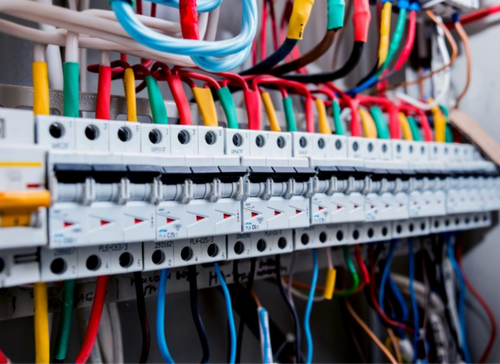Professional BRE Electrical Melbourne Services for Your Electrical Jobs
Professional BRE Electrical Melbourne Services for Your Electrical Jobs
Blog Article
The Ultimate Overview to Electrical Installation: Tips and Methods for a Safe and Efficient Home Wiring System
In the realm of home maintenance, few facets are as vital yet commonly ignored as the electrical wiring system. By exploring the subtleties of electrical safety steps and energy-saving methods, this thorough overview will certainly drop light on the ins and outs of home circuitry, empowering individuals to take charge of their household's electric framework.
Comprehending Electric Safety Actions
To guarantee the safety and security of both people and residential property, understanding and implementing correct electrical safety and security measures is extremely important in any home wiring task. It is critical to carry out a thorough inspection of the electric system prior to beginning any kind of electrical wiring task to identify prospective hazards or concerns that need to be attended to.
In addition, using the proper tools and devices is crucial for maintaining security throughout electrical setups. Shielded gloves, voltage testers, and protective eyewear are a few of the fundamental safety and security gear that must be put on to stop electrical shocks or mishaps. It is additionally important to de-energize circuits before servicing them and to identify all circuits and breakers clearly to stay clear of confusion.

Essential Tools for Home Wiring
Making certain the proper application of electrical safety and security measures in home wiring jobs entails making use of a specific set of vital tools created to promote the installment procedure properly and securely. Some of the trick devices needed for home wiring projects include a voltage tester for checking online cables, cord pole dancers for getting rid of insulation from cords, a cord cutter for precisely cutting wires to length, a screwdriver established for securing electric components, electrical tape for insulation and securing connections, a cable ripper for removing cable television sheathing, and a multimeter for gauging voltage, existing, and resistance.
Step-by-Step Electric Setup Guide
Starting an electrical setup job needs meticulous planning and adherence to safety and security guidelines. Prior to starting any type of work, ensure you have a thorough strategy laying out the design of the electrical system, including the positioning of outlets, buttons, and fixtures. Think about the power demands of each device to determine the ideal wire scale and breaker sizes.
The primary step in the setup process is to shut off the power supply to the location where you will be functioning. Utilize a voltage tester to validate that the circuits are de-energized prior to touching any cords. Next off, thoroughly remove existing fixtures or outlets and detach the wires.
When setting up brand-new wiring, run wires through wall surfaces and ceilings, safeguarding them in position with proper fittings. Adhere to local building regulations and supplier instructions for proper cable installation and links. BRE Electrical Solutions. See to it to classify cables for very easy recognition and future maintenance

Troubleshooting Common Electrical Wiring Issues
Having completed the installment procedure as laid out in the look at more info previous subtopic, repairing usual electrical wiring problems is a vital ability for making sure the security and functionality of your electric system. One typical problem is a stumbled breaker, usually brought on by overloaded circuits or a short circuit. To troubleshoot this, situate the breaker panel, identify the tripped breaker by seeking the one not completely in the "on" setting, and reset it by flipping it completely to "off" and after that back to "on." An additional common problem is a faulty electrical outlet, defined by no power or intermittent power supply. Guarantee the outlet is not regulated by a switch, after that utilize a voltage tester to look for power. If there is no power, transform off the circuit, evaluate the circuitry connections for any kind of loose or broken wires, and replace the electrical outlet if needed. Continuously flickering lights can show loose circuitry connections or an overloaded circuit. To address this, check and tighten all cable connections in the impacted components and switches and rearrange the tons on the circuit to stabilize the electrical need. Frequently inspecting and immediately attending to these common electrical wiring concerns will maintain the security and performance of your home electrical system.
Tips for Energy-Efficient Electrical Systems
For ideal power performance in electrical systems, executing clever techniques and making use of energy-saving modern technologies is paramount. One key idea for accomplishing an energy-efficient electric system is to update to LED lights. LED light bulbs consume significantly less energy than conventional incandescent light bulbs and have a longer life-span, making them a cost-effective choice in the future. Additionally, installing programmable thermostats can aid manage home heating and cooling down systems, minimizing energy waste when no one is home. Another approach is to spend in energy-efficient devices that are power STAR certified, guaranteeing they satisfy high criteria for power effectiveness. Proper insulation and securing of home windows, doors, and electrical outlets can likewise prevent power loss, eventually decreasing the work on electric systems. Lastly, think about including renewable resource resources like photovoltaic panels to more reduction reliance on typical power grids. By incorporating these energy-efficient pointers and innovations, property owners can not only conserve cash on their electrical energy bills yet also lower their environmental influence.
Final Thought
To conclude, carrying out correct precaution, using crucial tools, complying with a detailed installation guide, fixing usual issues, and incorporating energy-efficient ideas are crucial for a risk-free and effective home circuitry system. By sticking to check my site these practices, house owners can ensure the longevity and performance of their electrical setups. It is essential to focus on safety and effectiveness when it pertains to electric job in order have a peek at this website to avoid potential dangers and to keep a trustworthy electric system in the home.
Report this page